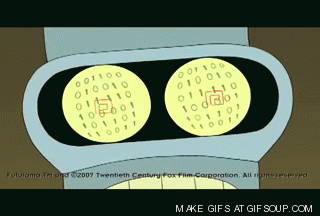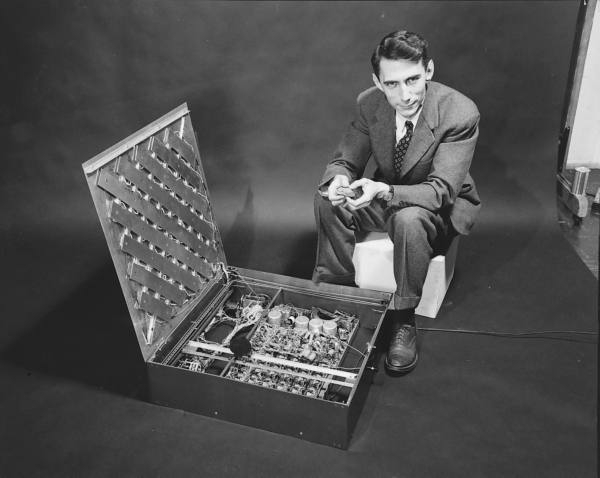Welcome back to another edition of Code History Lesson, where we spotlight ye computer scientists of olde, one tech genius at a time.
This week we’re taking a look at Claude Shannon, a man who won 10 honorary doctorates, pioneered the digital revolution, and sometimes juggled on a unicycle while doing it. For your entertainment and education, here are three reasons why Flatiron School students (and the world at large) are still feeling the aftershocks of his groundbreaking work today.
Shannon’s ideas not only pushed forward the development of the internet, but also numerous technologies like ZIP files and sending the Voyager into deep space — and those are just a few choice examples.
1. He’s hailed as the father of information theory
Though you likely didn’t realize it, Shannon’s ideas on information theory are what have made those dancing GIFs on your computer screen a possibility.
At the ripe old age of 32, Shannon wrote about this concept in a 1948 paper entitled “A Mathematical Theory of Communication.” For the first time ever, he explored the idea of quantifying the previously qualitative concept of communication, transforming it from nebulous to numerical. Shannon did this by connecting the well-established measures of probability (statistics) and entropy (thermodynamics) to a new measure of communication, called information.
Once Shannon connected these dots mathematically, it opened the door to signal processing, compression, and converting messages into code to transmit them digitally. To apply this new science, however, he needed a unit. Which brings us to…bits.
2. He invented the concept of bits
The concept of 0’s and 1’s have long been ingrained into contemporary pop culture (Bender from Futurama, anyone?), but binary digits (or “bits”) were a revolutionary idea in the 1940’s. In his paper, “A Symbolic Analysis of Relay and Switching Circuits,” Shannon coined the term “bits” by showing how two “truth values” could symbolize logic with the binary values of 0 and 1. With this came the idea that information could be transmitted without error once it became digital.

Those “010101” references may suddenly take on a new meaning.
Shannon was thinking that media — like photography — could be encoded into a universal language while people were still getting their news from ink printed on broadsheet paper. Like a domino effect of brilliant proportions, Shannon’s radical ideas created the building blocks for the smallest unit of data in a computer, which in turn paved the way for information storage and the proliferation of technological advances we have seen since.
3. He laid the foundation for digital computer design theory
Just as one cannot swim out of water, one cannot program without a computer. In the midst of WWII, Shannon joined Bell Labs to advance the fields of cryptography and fire-control systems. During his time there, he mathematically proved that any digital function could be systematically built as an arrangement of electromechanical relays. His findings were later used as the foundation for digital circuit design and — drumroll, please — electronic digital computers. The computers on our desks and in our pockets today still use the exact same ideas, only instead of large electromechanical relays, they use microscopic semi-conducting transistors. (Which were also invented at Bell Labs!)
Shannon even co-invented the first wearable computer in the 60’s with Edward Thorp, a concept that is still taking form in projects like Google Glass, Oculus Rift, and most recently the Apple Watch.
Without Shannon’s equation and its umbrella of uses, life as we know it would not be the same today. His ideas not only pushed forward the development of the internet, but also numerous technologies like ZIP files and sending the Voyager into deep space — and those are just a few choice examples. It’s hard to know how long and far Shannon’s impact will reach, but we are certain for one thing — his invention of a chess machine that made wry commentary as it played was also pretty ahead of its time.

Written byFLATIRON SCHOOL
Make yourself useful.


